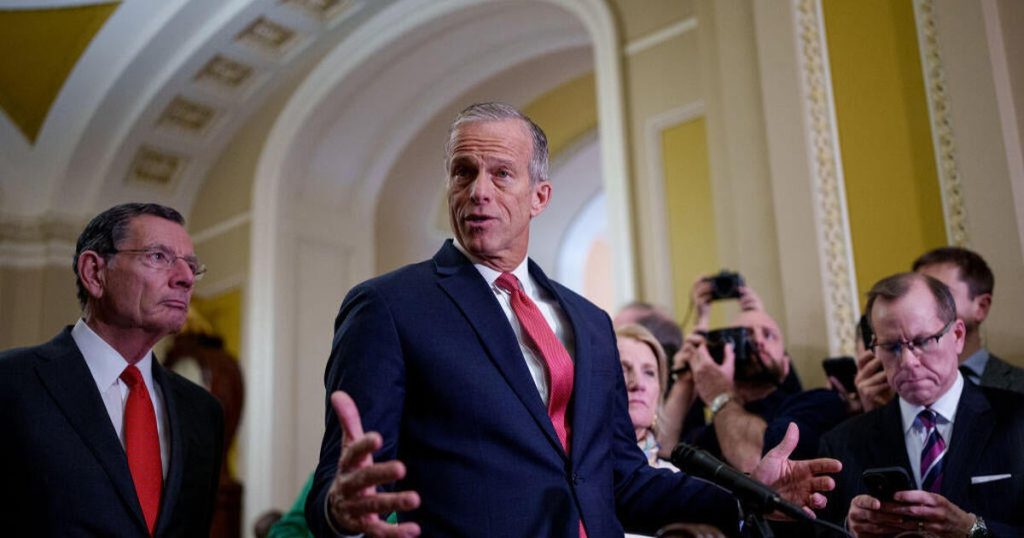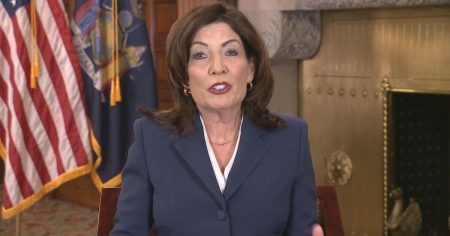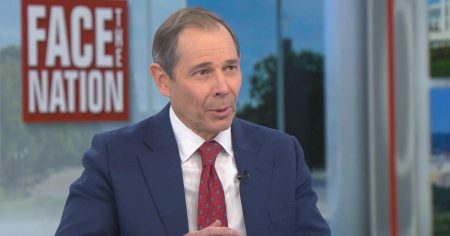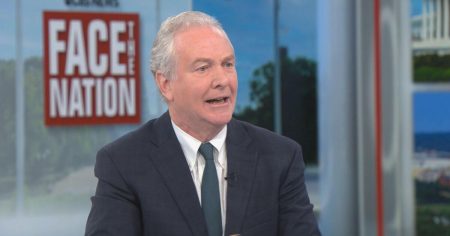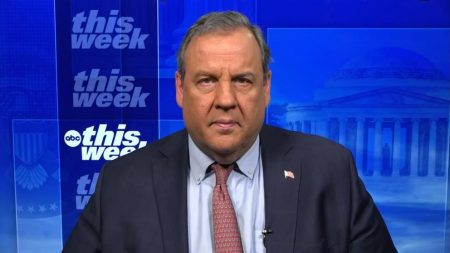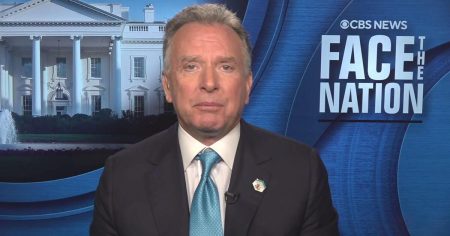A Tale of Two Budgets: Senate and House Republicans Diverge on Spending Priorities
The U.S. Senate and House of Representatives are currently locked in a high-stakes battle over competing budget proposals, with each chamber pursuing its own vision for the country’s financial future. Senate Republicans are moving forward with a narrowly focused budget resolution that prioritizes defense, border security, and energy initiatives. This approach contrasts sharply with a more comprehensive plan introduced by House Republicans, which includes sweeping tax cuts, significant spending reductions, and a higher debt ceiling. President Trump added fuel to the fire on Wednesday by endorsing the House’s plan, a move that caught Senate Republicans off guard but underscored the president’s preference for a bold, unified approach to budgeting.
The Senate’s Approach: Defense, Borders, and Energy
The Senate’s budget resolution, championed by Senate Republicans, seeks to increase military spending by $150 billion and allocate $175 billion for border security. However, it notably excludes the extension of tax cuts enacted during Trump’s first term, which are set to expire at the end of the year. Senate Republicans have signaled their intention to address tax cuts in a separate bill, aiming to make them permanent. This two-step strategy reflects a cautious and incremental approach, allowing lawmakers to tackle high-priority areas like defense and border security first while deferring more contentious issues for later.
Senate Majority Leader John Thune of South Dakota defended the chamber’s decision to pursue its own budget blueprint, emphasizing that the Senate is prepared to work with the House if its plan gains traction. “I think he’s made it clear for a long time that he would prefer one big, beautiful bill, and we’re fine with that too,” Thune said, referring to Trump. “If the House can produce one big, beautiful bill, we’re prepared to work with them to get that across the finish line, but we believe that the president also likes optionality.”
The House’s Vision: Tax Cuts, Spending Cuts, and a Higher Debt Ceiling
In contrast to the Senate’s targeted approach, the House Republican budget plan is far more ambitious. It includes $4.5 trillion in tax cuts, a $4 trillion increase in the debt ceiling, and at least $1.5 trillion in spending cuts. To appease conservative lawmakers, the House Budget Committee added a provision linking tax cuts to spending reductions. If House committees fail to achieve at least $2 trillion in spending cuts, the tax cuts would be scaled back. Conversely, if spending cuts exceed $2 trillion, the tax cuts would be expanded.
The House plan represents a victory for Speaker Mike Johnson, who has been working to unite his fragmented Republican conference behind a single vision. However, House GOP leaders remain uncertain about their ability to pass two separate bills given their narrow majority. This uncertainty has led Senate Republicans to proceed with their own blueprint, effectively creating a backup plan in case the House’s effort stalls.
Navigating the Political Landscape: Challenges and Opportunities
The Senate’s budget resolution is expected to pass, given the chamber’s three-seat Republican majority. However, the journey to final approval will not be straightforward. The Senate has embarked on a grueling process known as a “vote-a-rama,” during which lawmakers can propose an unlimited number of amendments, forcing the chamber to vote on issue after issue late into the night. While this process allows Senate Republicans to advance their priorities, it also gives Democrats an opportunity to force difficult votes on politically sensitive topics.
Sen. Patty Murray of Washington, the top Democrat on the Senate Appropriations Committee, warned Republicans to prepare for a late night and a long morning. Meanwhile, Senate Budget Committee Chairman Lindsey Graham of South Carolina emphasized that the Senate’s plan serves as a “Plan B” if the House’s blueprint fails. Graham urged his House colleagues to act swiftly, reiterating the Senate’s desire for permanent tax cuts. “To my House colleagues,” he said, “we will all get there together if you can pass the one big, beautiful bill that makes the tax cuts permanent—not four or five years—then we’ll all cheer over here.”
The Path Forward: Reconciliation and the Road Ahead
The eventual passage of a budget resolution in both chambers is just the first step in a lengthy process. The Senate and House will need to reconcile their differences and adopt identical budget resolutions to move forward with reconciliation, a process that allows Senate Republicans to pass legislation with a simple majority. This will require intense negotiation and compromise, as the two chambers’ plans differ significantly in scope and detail.
For now, the Senate is pressing ahead with its resolution, directing committees to submit their spending plans by March 7. The House, meanwhile, is in recess, giving Senate Republicans a brief window to shape the budget debate. As the process unfolds, all eyes will remain on Trump, whose endorsement of the House plan has injected new energy into the budget battle. Whether the Senate’s cautious approach or the House’s bold vision prevails will depend on lawmakers’ ability to navigate the complexities of reconciliation and the shifting political landscape.
Conclusion: A Delicate Balance of Power and Priorities
The current budget showdown in Washington underscores the challenges of governance in a divided government. As Senate and House Republicans pursue their respective visions, they must navigate not only the policy complexities but also the political realities of their narrow majorities. The Senate’s focus on defense, border security, and energy reflects a pragmatic desire to deliver tangible results, while the House’s emphasis on tax cuts and spending reductions speaks to the ideological priorities of its conservative wing.
Ultimately, the success of either plan will hinge on the ability of Republican leaders to unite their caucuses and secure the necessary votes. For now, the Senate’s budget resolution serves as a safety net, ensuring that key priorities are addressed even as the House pursues its more sweeping agenda. As the budget process moves forward, one thing is clear: the road ahead will be fraught with challenges, but it also presents an opportunity for lawmakers to shape the country’s financial future in meaningful ways.





